#maloyaroslavets
Explore tagged Tumblr posts
Text
Nobody could be less interested in military stuff than me but I guess those graphs indeed do prove the limits of mathematical approach to complicated topics with more than one variable. 😋
As to Soult: Where's Ocana? How is the battle of La Coruna counted as a defeat? Where's the taking of Badajoz?
As to Masséna: Caldiero was a victory now? How is Landshut, a rather minor engagement, counted the same way as the battle of Zürich? Why are the defeats during the third campaign into Portugal not listed?
As to Davout: Maloyaroslavetz? Maloyaroslavetz? ARE YOU FUCKING KIDDING ME? All Davout did there was have his men march up at a distance and possibly glance at the battlefield through a telescope! - Also, where's Hamburg? Would that count as a defeat (because he had to give up the town in the end) or as a victory (because he did hold out until the end of the war)?
It's often not even easy to tell who truly was the winner in a battle, in the end. Napoleon won Borodino. A world of good it did him, right? The French won at the Beresina. Did it change a thing? - I guess that's what I dislike most about pure military history, and about historians reducing Napoleon to "the crowned general": battles, if victories or defeats, had no value as such. The way they could be used politically was the only thing that made them important, and for a very long time Napoleon managed to remember that.
Edit: I've just checked the English Wikipedia entry for the Battle of Malyaroslavets. Davout's name is not even mentioned in the description of that battle? WTF?
Analysing the Quality of Napoleon's Marshals With Silly Data Science
Let's talk numbers and laugh at funny graphs with missing data!

Other people in this fandom do really lovely detailed information posts, I do weird fanfic, dragon shitposting, body pillow design shitposting and run a stupid Lannes ask rp blog. But! I'm also a programmer with an interest in Numbers, and today we're going to Analyse These Dead Frenchmen with a bunch of screenshots of graphs.
Ethan Arsht published a really interesting article called Napoleon was the Best General Ever, and the Math Proves it., where using data scraped off Wikipedia articles, he creates a statistical model drawing from multiple variables per battle to calculate How Good A General Is At Winning.
Give the article a read, it's great stuff, but if you don't feel like it, he basically applies WAR - "Wins Above Replacement" - which is a value from baseball that measures how many wins a player is worth when compared to a replacement.
So the general's WAR would be how well they compare to a completely average general who replaced them. Yes, as Arsht says, "in other words, I would find the generals’ WAR, in war."
But as he says, this is not a stringent historical analysis and is more of a fun thought experiment. Wikipedia is probably the most comprehensive dataset on this topic that he had access to, but it is Wikipedia the crowdsourced online encyclopedia, so it is going to have holes and inaccuracies. And this was written seven years ago, and the data was collected then, so any updates to these articles since then wouldn't be reflected.
And it's not a perfect model that takes into account everything - it's an approximation, a whole bunch of number crunching. I haven't looked too deeply into how the numbers work exactly, even though I could.
I think that 0 would be "completely and utterly average"? A positive WAR is good, a negative WAR is not. Napoleon is the best general ever at 16.679 WAR, the next highest is Caesar at 7.445 WAR.

(Link, you can hover over each battle and look at each datapoint!)
But I'm interested in Napoleon's marshals. The 26 men he raised up to military nobility! The dramatic assholes who kept arguing with each other. I'll post links for all of them at the end of this, but I won't be screenshotting each of their WAR graphs, just a few.
I'm not entirely sure how the scraper collected the information about what battles a commander is considered in "charge" of - I tried looking at the provided code repository but I am reminded that data science people bless them are not really good at structuring or publishing code and why are all the html pages just straight up saved in the root folder why are the jupyter notebook outputs just uncleared aaaaaaaaaaaaaaa
Oh yeah this was scraped from seven years ago so current wikipedia pages won't be reflective of what's on the graphs - so we can assume that this is just grabbing stuff from the "Commanders and leaders" part from each individual battle page and collating them into numbers
Anyway let's look at the iron man himself, Davout, considered to be the best of Napoleon's marshals.

(Link)
Heh, here we see the first hole in the dataset - Jena-Auerstedt is considered to be one battle, and Napoleon would like you to think that's the case.
Anyway, pretty good! Let's look at Jean Lannes, the lively Gascon
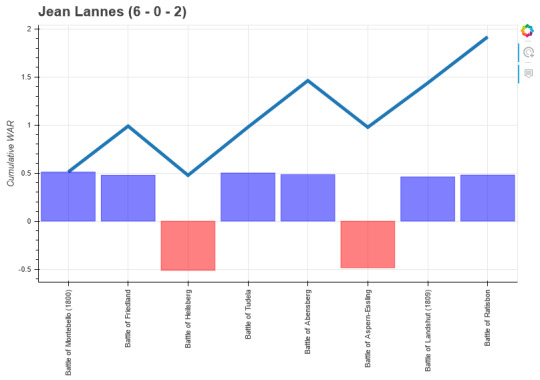
(Link)
Oooooh, even better than Davout! Helps he didn't go to Russia. Wait, why is Aspern-Essling dated to before Ratisbon, especially when Lannes died in the former?
Let's look at André Masséna, also known as being pretty cool:
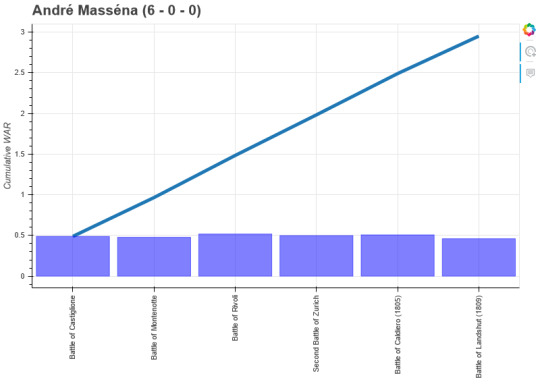
(Link)
Damn, neat, though I think there's a lot of omissions here.
Here's Murat:
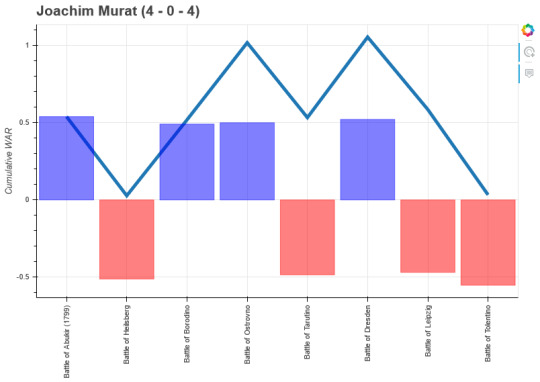
(Link)
Lol Tolentino, I do like how Murat Peaked there a little bit
But we're forgetting a certain redhead, aren't we?

(Link)
Ouch. But also Waterloo not appearing there, hmmm.
Anyway let's finish off the screenshots with Napoleon's greatest strategist, Jean-de-Dieu Soult, the man that Wellington called a master of the defensive!

(Link)
honestly this is the entire reason why i wanted to write this post
in soult's defense - as a soult defender - he had a pretty shitty army full of conscripts, was isolated, was occasionally pretty bad at adapting tactically to new surprises and had to deal with the english being stubborn fuckers, but he was brilliant in setting things up strategically and forcing the english to catch up through a fighting retreat with a demoralised army, stopping them from closing in on france too
but also the way this graph bullies soult so hard makes me laugh a lot
Anyway, yeah, these graphs are definitely inaccurate and I'm also posting these to see the Napoleonic community on tumblr's reaction to them, but they are a fun way to engage with history!
Just don't take them seriously, and feel free to argue in the tags/comments/reblogs
I could theoretically use this guy's code to rerun this just for the Marshals now - I know my way around some data science code - but I do have a lot on my plate, but it would be a fun experiment!
Marshal WAR Graph Links
Note: So these are under the Wikipedia article names at the time that the web scraper was run seven years ago so some of these names turned out to be different from what they are now and I had to do a bit of digging to fix some
you can definitely tell that the information is incomplete on a lot of these, again i repeat the information was scraped off wikipedia seven years ago
Louis-Nicolas Davout
Jean Lannes
Joachim Murat
Michel Ney
André Masséna
Jean-de-Dieu Soult
Bon-Adrien Jeannot de Moncey (one battle lol)
Jean-Baptiste Jourdan
Charles-Pierre Augereau
Jean-Baptiste Bernadotte aka Charles XIV John of Sweden (Two battles and only Swedish ones I think)
Guillaume Brune
Édouard Mortier (two battles)
Jean-Baptiste Bessières (two battles)
François Christophe de Kellermann (one battle, Valmy)
François Joseph Lefebvre (two battles)
Charles-Victor Perrin (ouch)
Étienne Macdonald
Nicolas Oudinot (lol)
Auguste de Marmont (loll)
Laurent de Gouvion Saint-Cyr
Józef Poniatowski (three battles but hmm. pretty bad but feel like there's too much missing info here)
Emmanuel de Grouchy (two battles, can't make a Where's Grouchy joke)
Marshals Without Graphs Not because they didn't command anything but I couldn't find their graphs on the website or in the code repo
Catherine-Dominique de Pérignon
Jean-Mathieu-Philibert Sérurier
Louis-Gabriel Suchet (wtf? maybe seven years ago the documentation on him was sad)
EDIT: wait i was looking at the notebook (the uh place where the code was being run, to see if i could run the code myself)
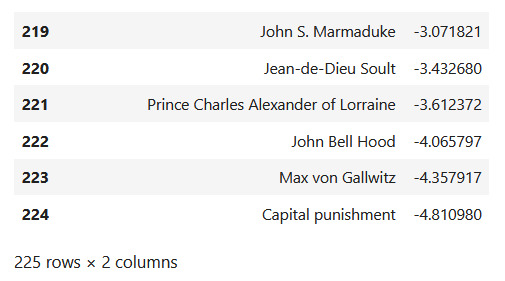
soult is one of the lowest ranked generals overall on this initial list pfftHAHAHhahahahahahahaha
#vincere scis hannibal victoria uti nescis#napoleon's marshals#napoleonic shitpost#please leave to eugene the bit of military success he had#maloyaroslavets even got him in hot waters with stepdad#according to hortense at least
40 notes
·
View notes
Text
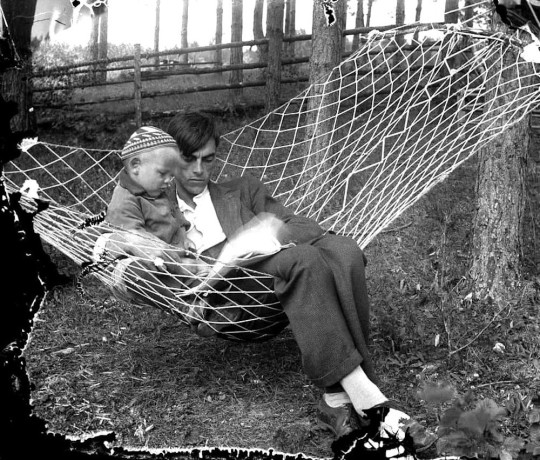
Arseny & Andrei Tarkovsky, Maloyaroslavets, Russia, 1934
38 notes
·
View notes
Text
SAINTS&READING: SUNDAY, JUNE 22, 2025
june 22_june 9
postles' (Peter & Paul) Fast. Fish Allowed
All venerable and holy Fathers of the Holy Mount Athos (movable holiday on the 2nd Sunday of Pentecost).

All Russian Saints
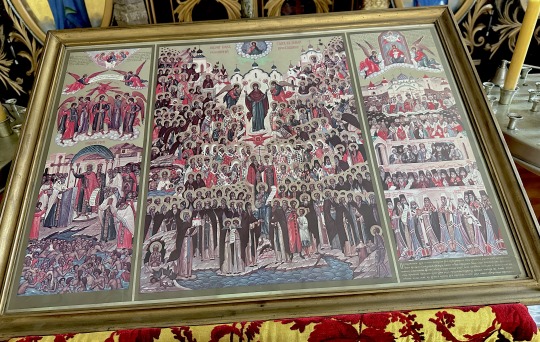
UNCOVERING OF THE RELICS OF VENERABLE RAPHAEL THE CONFESSOR OF OPTINA (2005)

"I cast all joy away — In God alone I sought my peace, From worldly pleasures turned to pray, Through hardship found my soul's release."
Hieromonk Raphael Sheychenko
"I came here — to die to the world"
Rodion Sheychenko, the man who would one day be Venerable Confessor Raphael, first drew breath in 1891. He grew up in Veliko-Mikhaylovskaya, a village in the Nizhne-Oskolsky district of Kursk province. His family were Little Russian peasants. His father, Ivan, made his living by binding books and mending shoes, and he passed on both these crafts to his son. By 1906, young Rodion had finished parish church school and went on to a Zemstvo school. There, he studied for three more years before returning to his father’s side and the familiar tools of the trade.
A longing for the monastic life took root in Rodion’s heart early on. Again and again, he travelled to Optina Monastery and offered his labour there, simply for the love of God.
Yet his boyhood hope had to wait. Called up for military service in 1913, he trained as a veterinary paramedic. This knowledge served him well in later years, even saving his life on one occasion. Young Rodion clearly made his mark as a soldier; he rose to non-commissioned officer with the 6th Uhlan Volyn Regiment, where he stayed until demobilisation in 1918.
Once free from service, Rodion returned to his family briefly, only to say his goodbyes. His heart was set on Optina, where he thought he would remain for always.
Nearly forty years on, writing from the camps in the 1950s, Hieromonk Raphael recalled warmly his arrival at the monastery:
"Early on a May morning, in the prime of my youth, I reached Optina's holy gates. The bell rang out, calling everyone to early Divine Liturgy. Those gates stood open. Pilgrims with gentle faces hurried towards the church... I brought here, to the venerable feet of the elders, but above all to the foot of the Holy Cross of Christ, my will, my youth, and my life. I came here — to die to the world…"
The monastery welcomed Rodion as a novice on 26 August 1918. But he never got to take his vows. Before the year was out, the monastery was shut down. The brethren did all they could to keep it going. Even when Optina became a breeding farm, Rodion carried on as the vet, though not for long... By 1923, the authorities closed Optina for good and forced the monks to disperse. Like many of his Optina brethren, novice Rodion settled in nearby Kozelsk, cobbling shoes to get by.
Tonsure and first arrest
Then, in 1928, a full decade after he had first walked through Optina's gates, Hieromonk Macarius (Chilikin) of Optina tonsured Novice Rodion, giving him the monastic name Raphael. This was done with the blessing of Bishop Stefan (Vinogradov) of Maloyaroslavets, who was vicar for the Kaluga diocese. That same year, Bishop Herman (Weinberg) ordained him hierodeacon and raised him to archdeacon.
Bishop Herman deeply appreciated Father Raphael’s work alongside him and tried hard to persuade him to follow him to Alma-Ata. But Raphael would not leave. He had grown to love Optina with all his heart, so he stayed put in Kozelsk.
Here began Father Raphael’s harsh road as a monk, one that he would write about much later to his spiritual children:
"For every follower of Christ — monks above all — the road to Heaven runs only through Golgotha. Cross in hand, cross on shoulder."
Archdeacon Raphael, for his part, would not admit to any counter-revolutionary activities. Not a word of it was true, he insisted under questioning. The landlady of the flat he rented in Kozelsk, however, gave her account: “From talking with Raphael, I know he’s a staunch, unshakeable monk, with those old-fashioned views typical of them.”
Sure enough, on 27 November 1930, Father Raphael received a ten-year sentence. He was to serve it in the Vishera corrective labour camp, out in the settlement of Malaya Vizhaikha in the Ural region. In 1934, a transfer brought him to Dmitrov camp near Moscow. There, at least, he could put to use his skills as a veterinary paramedic. This came as a welcome relief to Father Raphael. The job also earned him extra food to add to his pitiful camp rations: he would take what was meant for the pigs, so he was not quite as hungry as many of the other prisoners.
Hieromonk Raphael openly professed his faith: he received a Gospel, a prayer book, and an icon during a visit. Living in an abandoned pigsty, he found space to pray and exchange letters with fellow believers.
The secret police (NKVD) officer would sometimes intercept his letters and report him up the chain, demanding his arrest. A search once turned up fragments of believers' letters and poems by Tatiana Grimblit, someone he had written to at an earlier camp. These became evidence of "counter-revolutionary agitation." So, in 1936, Archdeacon Raphael got another six years, this time in the frozen north: first Murmansk, then Usollag camp at Solikamsk in the Perm region.
Return and a ministry renewed

Father Raphael finally gained his freedom on 18 November 1943. By April of the following year, he had at last made his way back to Kozelsk, where Optina Monastery had stood before its closure. The authorities offered him a bargain: stay away from church life, and they would leave him alone. Yet, on 1 October, Father Raphael accepted his ordination as a hieromonk. The same day, he became rector of Kozelsk's Annunciation Church.
War had left the church in ruins. The faithful rebuilt it stone by stone, with bare hands and no machinery. By 1949, through hard work and God’s grace, the church stood restored.
Having suffered persecution himself, Father Raphael did all he could to help others returning from exile and prison who came to him in need. Among them were nuns from Shamordino, whom he supported both spiritually and with whatever material help he could find. His letters to spiritual children began flowing again...Continue reading St Elizabeth Convent
THE RETURN OF THE HOLY TRINITY ICON BY St ANDREI RUBLEV, TO THE HO;LY TRINITY ST SERGIUS LAVRA (2024).

After 104 years, St. Andrei Rublev’s world-famous Holy Trinity Icon has finally returned to its historical home at the Holy Trinity-St. Sergius Lavra for good.
The 15th-century icon initially found its home on the iconostasis of the Holy Trinity Cathedral at the Lavra, founded by St. Sergius of Radonezh in the 14th century. However, when the godless authorities came to power in Russia, they removed the icon from the monastery. In 1929, after nine years in a museum in Zagorsk (Sergiev Posad), it was transferred to the Tretyakov Gallery in Moscow, where it remained until last year, except for a few days in July 2022 when the icon was taken to the Lavra for the 600th anniversary of the uncovering of the relics of St. Sergius.
The Icon was delivered to Christ the Savior Cathedral in Moscow in time for Pentecost 2023, after which it underwent professional restoration. It was then returned to Christ the Savior in January of this year.
And this weekend, the Icon returned to its historical home, where it will now remain for good.
A group of clergy carried the Icon from the gates of the monastery to the Holy Trinity Cathedral, where it was installed in its historical place, on the right of the Royal Doors.
“When the Icon was taken out of the Lavra, when the monastery was desecrated, those evil people probably couldn’t even imagine that the time would come not only for the return of the holy Icon to the place where it originally was, but also for the revival of faith in our people in general,” the Patriarch preached.
Indeed about 200 000 people came to venerate the icon after it was returned to its origina l home.
Source: Orthodox Christianity

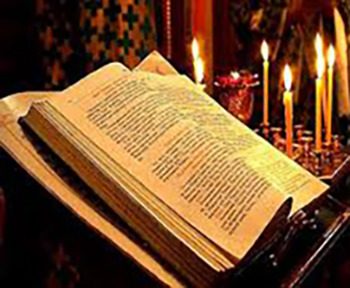
Romans 2:10-16
10 but glory, honor, and peace to everyone who works what is good, to the Jew first and also to the Greek. 11 For there is no partiality with God. 12 For as many as have sinned without law will also perish without law, and as many as have sinned in the law will be judged by the law 13 (for not the hearers of the law are just in the sight of God, but the doers of the law will be justified; 14 for when Gentiles, who do not have the law, by nature do the things in the law, these, although not having the law, are a law to themselves, 15 who show the work of the law written in their hearts, their conscience also bearing witness, and between themselves their thoughts accusing or else excusing them) 16 in the day when God will judge the secrets of men by Jesus Christ, according to my gospel.
Matthew 4:18-23
18 And Jesus, walking by the Sea of Galilee, saw two brothers, Simon called Peter, and Andrew his brother, casting a net into the sea; for they were fishermen. 19 Then He said to them, "Follow Me, and I will make you fishers of men." 20 They immediately left their nets and followed Him. 21 Going on from there, He saw two other brothers, James the son of Zebedee, and John his brother, in the boat with Zebedee their father, mending their nets. He called them, 22 and immediately they left the boat and their father, and followed Him. 23 And Jesus went about all Galilee, teaching in their synagogues, preaching the gospel of the kingdom, and healing all kinds of sickness and all kinds of disease among the people.
#orthodoxy#orthodoxchristianity#easternorthodoxchurch#originofchristianity#spirituality#holyscriptures#gospel#bible#wisdom#saints#icon#sacredart
2 notes
·
View notes
Text
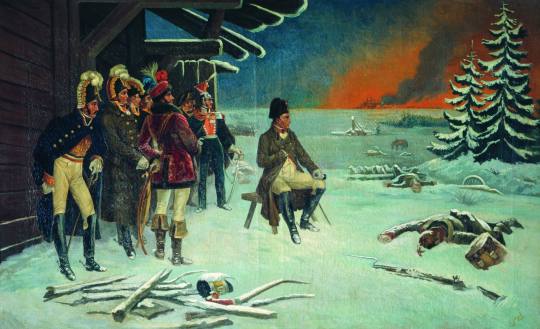
Napoleon in Maloyaroslavets by Stefan Bakałowicz (n.d.)
This guy mainly painted genre paintings of ancient Rome.
wikimedia
7 notes
·
View notes
Text






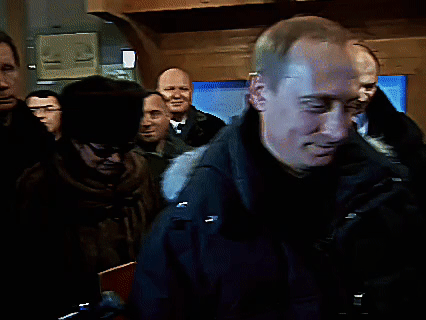



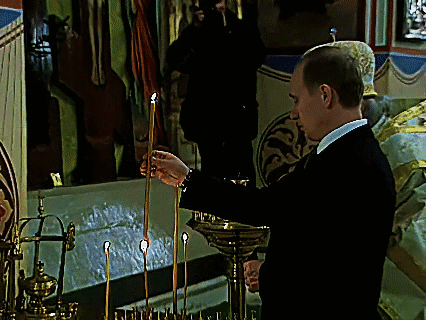

January 6–7, 2002
Tour of the Golden Ring towns. During the Christmas holidays, Vladimir Putin toured the Golden Ring, a string of historic towns northeast of Moscow. His first stop was Pereslavl-Zalessky. The President visited the Boat of Peter the Great Museum. The Fortuna, a boat Peter the Great actually built with his own hands in 1689, was the only ship of an entire training flotilla that survived an 18th-century fire. In Gus-Khrustalny, Vladimir Region, the president visited the unique Glass and Crystal Museum, which carefully stores more than 13,000 pieces of art. The local Crystal Factory recently marked its 245th anniversary. On his way from the museum to the factory, the president spoke with residents and wished them happy holidays. In Maloyaroslavets, Kaluga Region, Vladimir Putin visited a local secondary school, where he watched a Christmas show put on by children from the Otrada home for children at Chernoostrovsky Convent.
#putinedit#russia#russian president#vladimir vladimirovich putin#vladdy daddy#my edit#my edits#Президент России Владимир Путин#зима#январь
8 notes
·
View notes
Text

1812 10 12 Maloyaroslavets - Aleksandr Averyanov
8 notes
·
View notes
Text
Events 10.24 (before 1920)
AD 69 – In the Second Battle of Bedriacum, troops loyal to Vespasian defeat those of Emperor Vitellius. 1260 – Chartres Cathedral is dedicated in the presence of King Louis IX of France. 1260 – After defeating the Mongols at the Battle of Ain Jalut and assassinating the previous Mamluk sultan, Qutuz, Baybars ascends to the Egyptian throne as the fourth sultan of the Mamluk Sultanate. 1360 – The Treaty of Brétigny is ratified, marking the end of the first phase of the Hundred Years' War. 1590 – John White, the governor of the second Roanoke Colony, returns to England after an unsuccessful search for the "lost" colonists. 1596 – The second Spanish armada sets sail to strike against England, but is smashed by storms off Cape Finisterre forcing a retreat to port. 1641 – Felim O'Neill of Kinard, the leader of the Irish Rebellion, issues his Proclamation of Dungannon, justifying the uprising and declaring continued loyalty to King Charles I of England. 1648 – The Peace of Westphalia is signed, marking the end of the Thirty Years' War and the Eighty Years' War. 1795 – Poland is completely consumed by Russia, Prussia and Austria. 1812 – Napoleonic Wars: The Battle of Maloyaroslavets takes place near Moscow. 1813 – Treaty of Gulistan: The Russo-Persian War of 1804-1813 comes to a close with the signing of the Treaty of Gulistan, under which terms Qajar Iran agrees to cede the bulk of its Caucasian territories, which comprise much of modern Dagestan, Georgia, Armenia, and Azerbaijan, to the Russian Empire. 1851 – William Lassell discovers the moons Umbriel and Ariel orbiting Uranus. 1857 – Sheffield F.C., the world's oldest association football club still in operation, is founded in England. 1860 – Convention of Peking: The Second Opium War formally comes to a close, with Qing China ceding Kowloon in perpetuity to the victorious British Empire. 1861 – The first transcontinental telegraph line across the United States is completed. 1871 – An estimated 17 to 22 Chinese immigrants are lynched in Los Angeles, California. 1876 – Shinpūren rebellion: Upset at the Westernisation of Meiji Japan and the abolition of the Tokugawa feudal hierarchy, the Keishintō, a group of extremist Shinto former samurai, launch a surprise attack against the Meiji government in Kumamoto Prefecture. 1886 – Normanton incident: As the British merchant vessel Normanton sinks off the coast of Japan, her European officers appear to commandeer the ship’s lifeboats for themselves, leaving her Asian crew and passengers to die and conjuring significant political outrage in Japan. 1889 – Henry Parkes delivers the Tenterfield Oration, effectively starting the federation process in Australia. 1894 – First Sino-Japanese War: Battle of Jiuliancheng: Under the command of General Yamagata Aritomo, the Imperial Japanese Army covertly crosses the Yalu River into Qing territory and launches an assault on the fortifications at Hushan. 1900 – U.S. Government announces plans to buy Danish West Indies for $7 million. 1901 – Annie Edson Taylor becomes the first person to go over Niagara Falls in a barrel. 1902 – Guatemala's Santa María volcano begins to erupt, becoming the third-largest eruption of the 20th century. 1911 – Orville Wright remains in the air nine minutes and 45 seconds in a glider at Kill Devil Hills, North Carolina. 1912 – First Balkan War: The Battle of Kirk Kilisse concludes with a Bulgarian victory against the Ottoman Empire. 1912 – First Balkan War: The Battle of Kumanovo concludes with the Serbian victory against the Ottoman Empire. 1917 – World War I: Italy suffers a disastrous defeat at the Battle of Caporetto on the Austro-Italian front. 1918 – World War I: Italian victory in the Battle of Vittorio Veneto.
0 notes
Text
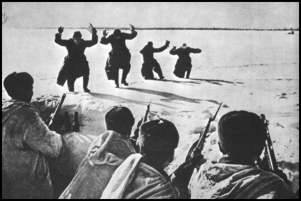
German soldiers surrendering to Soviet soldiers January 2, 1942 in Maloyaroslavets, Soviet Union.
0 notes
Photo
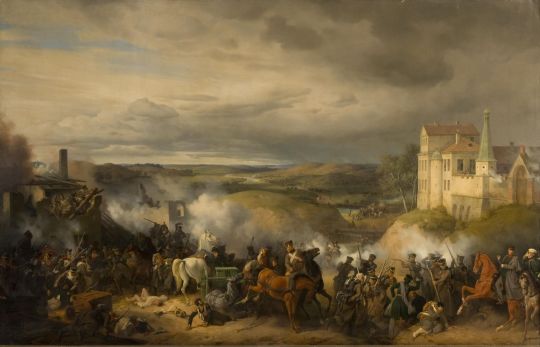
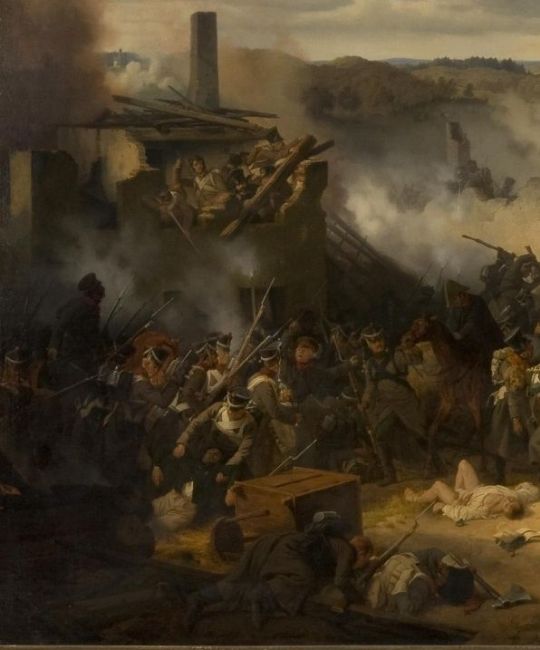
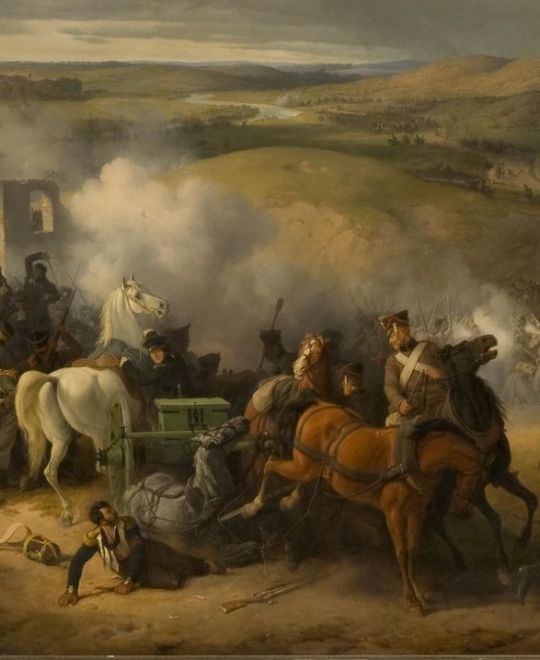
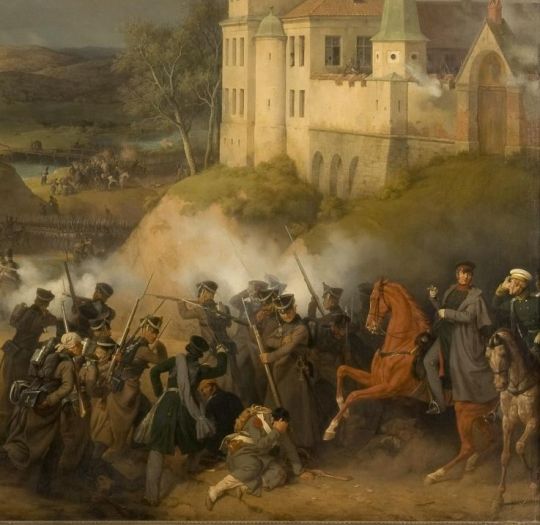
Russian and French troops clash at the battle of Maloyaroslavets, 24 October 1812, painted by Peter von Hess
You can read more about this engagement here.
53 notes
·
View notes
Video
Train-cleaner by Sergey_Milash
11 notes
·
View notes
Text

Fuck you !
- Malojaroslawez, 05/05/2020 -
2 notes
·
View notes
Photo

Flag of Spas-Zagore, Maloyaroslavets district, Kaluga Oblast
Yo dawg I heard you like flags and Orthodox Christianity so I put a Jesus flag on your flag, so you can raise your flag and worship Jesus
8 notes
·
View notes
Text
Saints&Reading: Wednesday, August 23, 2013
august 10_august 23
BLESSED LAWRENCE, FOOL-FOR-CHRIST AND KALUZHSK WONDERWORKER ( 1515)

Blessed Laurence, the Fool-for-Christ and Wonderworker of Kaluga, lived at the beginning of the XVI century at a distance of half a verst from old Kaluga, near a forest church dedicated to the Nativity of Christ, set upon a high hill.
There was a long underground entrance from his dwelling place to the church, where he attended services. He also lived at the home of the Kaluga Prince Simeon. It is thought that Blessed Laurence was descended from the noble Khitrov family, since his name is at the head of their memorial at the Peremyshl’sk Liutykov Monastery in the Kaluga diocese.
Blessed Laurence went barefoot both winter and summer, dressed in a shirt and sheepskin coat. By his ascetical struggles he had risen to such heights of virtue that during his lifetime, he was glorified by gifts of grace. He healed many diseases of the eyes through his prayers.
When the Crimean Tatars attacked Kaluga in May 1512, Blessed Laurence, then in the Prince's home, suddenly shouted in a loud voice: “Give me my sharp axe, for the curs are attacking Prince Simeon and I must defend him!” Saying this, he grabbed the axe and left. Suddenly, he was on board a ship next to the Prince. The Holy Fool Laurence inspired and encouraged the soldiers, and at that very hour they defeated the enemy.
Sometimes, he is depicted on icons with an axe in his right hand, set upon a long handle. It is certain that Prince Simeon (+ 1518), who owed his life to Blessed Laurence, built a monastery on the site of the Saint’s ascetical struggles and dedicated it to him.
Blessed Laurence reposed on August 10, 1515, on his Name Day. The Saint is also commemorated on July 8, perhaps in remembrance of his first posthumous miracle in Kaluga in 1621.1
In that year, the paralyzed boyar Lev Andreevich Kologrivov, who could not move his hands and legs, and was unable to speak, was placed near the tomb of Saint Laurence. During a Moleben, as the Gospel was read, the paralyzed man spoke and began to believe. Raising his right hand, he made the Sign of the Cross; then he stood up, went to the tomb and attached himself to it. By the end of the Moleben, he was able to speak normally, and became perfectly healthy.
Blessed Laurence seems to have been glorified in the second half of the XVI century. Tsar Ivan the Terrible wrote the following on a deed granting land to the monastery in 1565: “To the Monastery of the Nativity of Christ, where Laurence, the Fool-for-Christ lies."
During the Napoleonic invasion of Russia, the intercession of Blessed Lawrence for his native land was shown in a vivid manner. Kaluga became "the limit of the (French) offensive and the beginning of the enemy's retreat and destruction," according to an inscription on the Maloyaroslavets monument commemorating the battle on October 12, 1812.
In August 2018, some of Saint Laurence's relics were discovered in a storeroom of the Moscow Central Museum of the Armed Forces. On August 10/23, a portion of the holy relics was given to the Monastery in Kaluga where the body of Saint Laurence was once buried.
1 The latter commemoration does not seem to be listed on the Calendar of the Russian Orthodox Church.


2 CORINTHIANS 6:11-16
11 O Corinthians! We have spoken openly to you, our heart is wide open. 12 You are not restricted by us, but you are restricted by your own affections. 13 Now in return for the same (I speak as to children), you also be open. 14 Do not be unequally yoked together with unbelievers. For what fellowship has righteousness with lawlessness? And what communion has light with darkness? 15 And what accord has Christ with Belial? Or what part has a believer with an unbeliever? 16 And what agreement has the temple of God with idols? For you are the temple of the living God. As God has said: "I will dwell in them And walk among them. I will be their God, And they shall be My people."
MARK 1:23-28
23 Now there was a man in their synagogue with an unclean spirit. And he cried out, 24 saying, "Let us alone! What have we to do with You, Jesus of Nazareth? Did You come to destroy us? I know who You are Holy One of God!" 25 But Jesus rebuked him, saying, "Be quiet, and come out of him!" 26 And when the unclean spirit had convulsed him and cried out with a loud voice, he came out of him. 27 Then they were all amazed, so that they questioned among themselves, saying, "What is this? What new doctrine is this? For with authority He commands even the unclean spirits, and they obey Him." 28 And immediately His fame spread throughout all the region around Galilee.
#orthodoxy#orthodoxchristianity#easternorthodoxchurch#originofchristianity#spirituality#holyscriptures#bible#gospel#wisdom#saints
3 notes
·
View notes
Photo

Малоярославец. Окрестности. Красота.
2 notes
·
View notes
Photo

I. Through the roots and nostalgia.
‘Time within Time: Diaries 1970-1986’ by A.Tarkovsky / ‘Arseny and Andryusha, Maloyaroslavets, 1934′.
3 notes
·
View notes
Text
Events 10.24 (before 1930)
AD 69 – In the Second Battle of Bedriacum, troops loyal to Vespasian defeat those of Emperor Vitellius. 1260 – Chartres Cathedral is dedicated in the presence of King Louis IX of France. 1360 – The Treaty of Brétigny is ratified, marking the end of the first phase of the Hundred Years' War. 1590 – John White, the governor of the second Roanoke Colony, returns to England after an unsuccessful search for the "lost" colonists. 1596 – The second Spanish armada sets sail to strike against England, but is smashed by storms off Cape Finisterre forcing a retreat to port. 1641 – Felim O'Neill of Kinard, the leader of the Irish Rebellion, issues his Proclamation of Dungannon, justifying the uprising and declaring continued loyalty to King Charles I of England. 1648 – The Peace of Westphalia is signed, marking the end of the Thirty Years' War and the Eighty Years' War. 1795 – Poland is completely consumed by Russia, Prussia and Austria. 1812 – Napoleonic Wars: The Battle of Maloyaroslavets takes place near Moscow. 1851 – William Lassell discovers the moons Umbriel and Ariel orbiting Uranus. 1857 – Sheffield F.C., the world's oldest association football club still in operation, is founded in England. 1861 – The first transcontinental telegraph line across the United States is completed. 1871 – An estimated 17 to 22 Chinese immigrants are lynched in Los Angeles, California. 1889 – Henry Parkes delivers the Tenterfield Oration, effectively starting the federation process in Australia. 1900 – U.S. Government announces plans to buy Danish West Indies for $7 million. 1901 – Annie Edson Taylor becomes the first person to go over Niagara Falls in a barrel. 1902 – Guatemala's Santa María Volcano begins to erupt, becoming the third-largest eruption of the 20th century. 1911 – Orville Wright remains in the air nine minutes and 45 seconds in a glider at Kill Devil Hills, North Carolina. 1912 – First Balkan War: The Battle of Kirk Kilisse concludes with a Bulgarian victory against the Ottoman Empire. 1912 – First Balkan War: The Battle of Kumanovo concludes with the Serbian victory against the Ottoman Empire. 1917 – World War I: Italy suffers a disastrous defeat at the Battle of Caporetto on the Austro-Italian front. 1918 – World War I: Italian victory in the Battle of Vittorio Veneto. 1926 – Harry Houdini's last performance takes place at the Garrick Theatre in Detroit. 1929 – "Black Thursday" on the New York Stock Exchange.
0 notes
